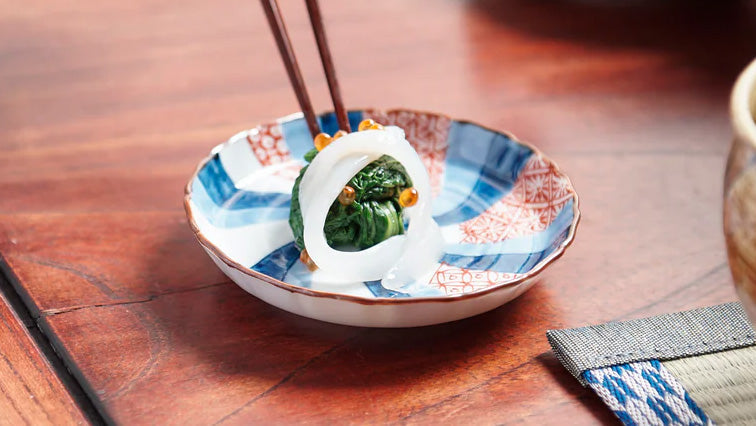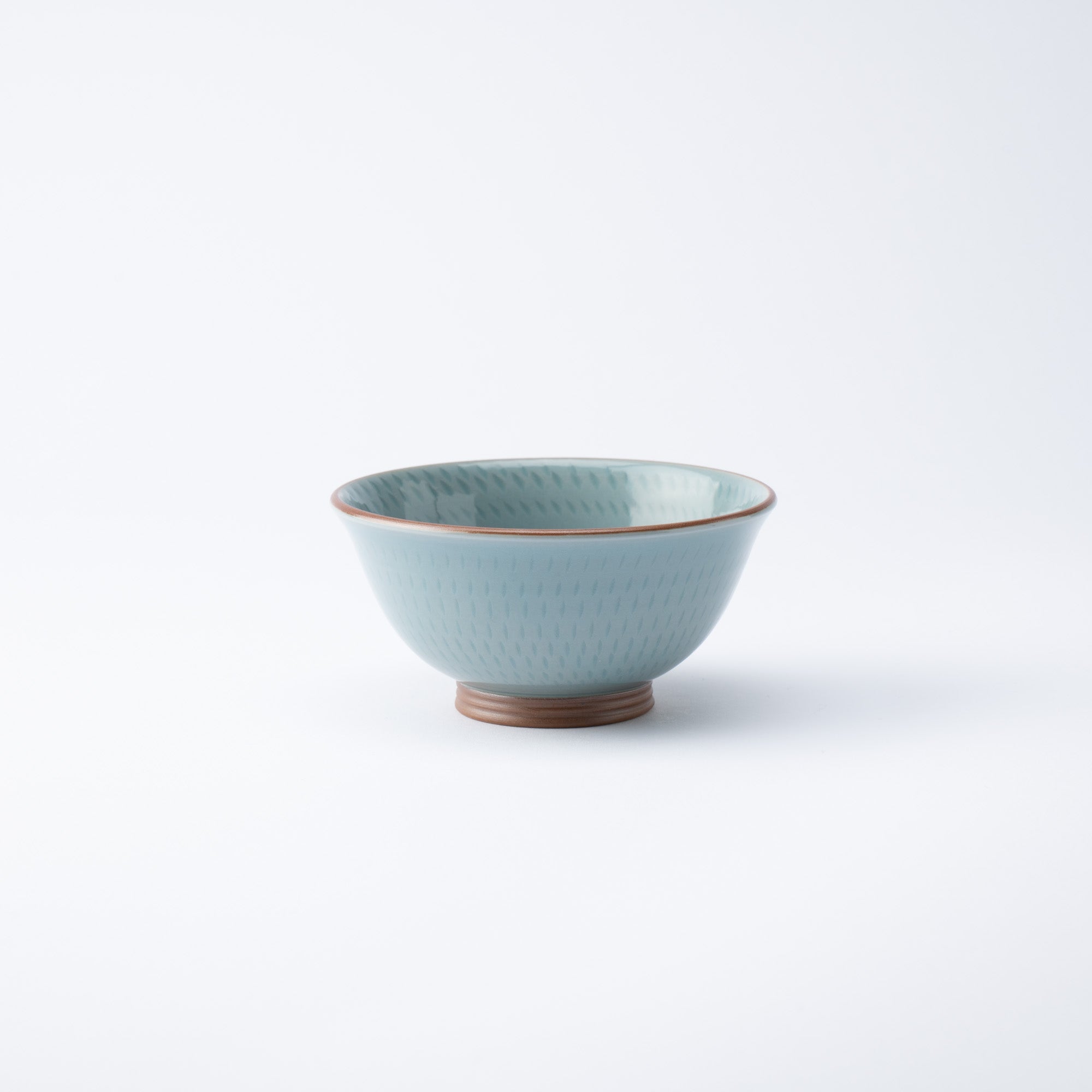
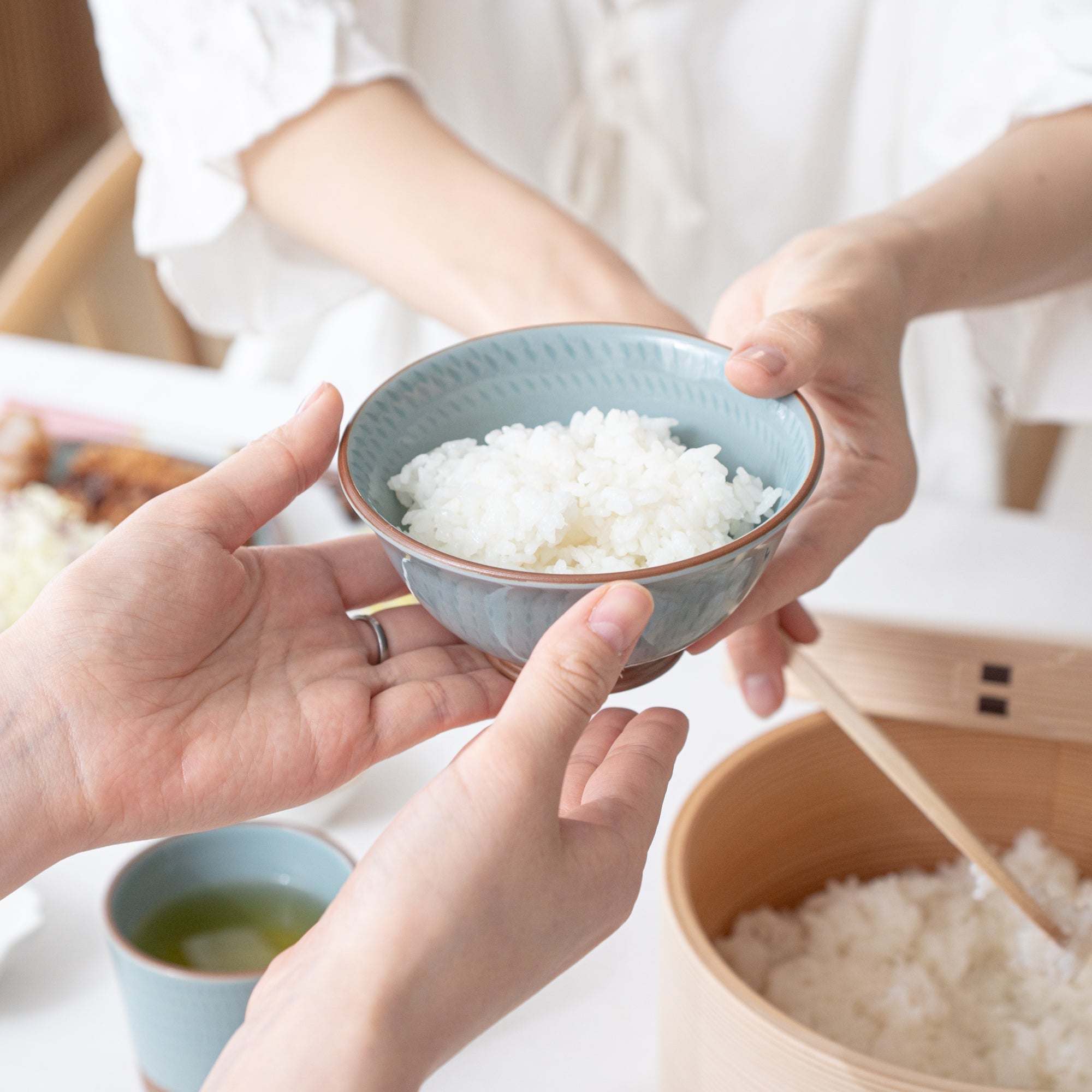
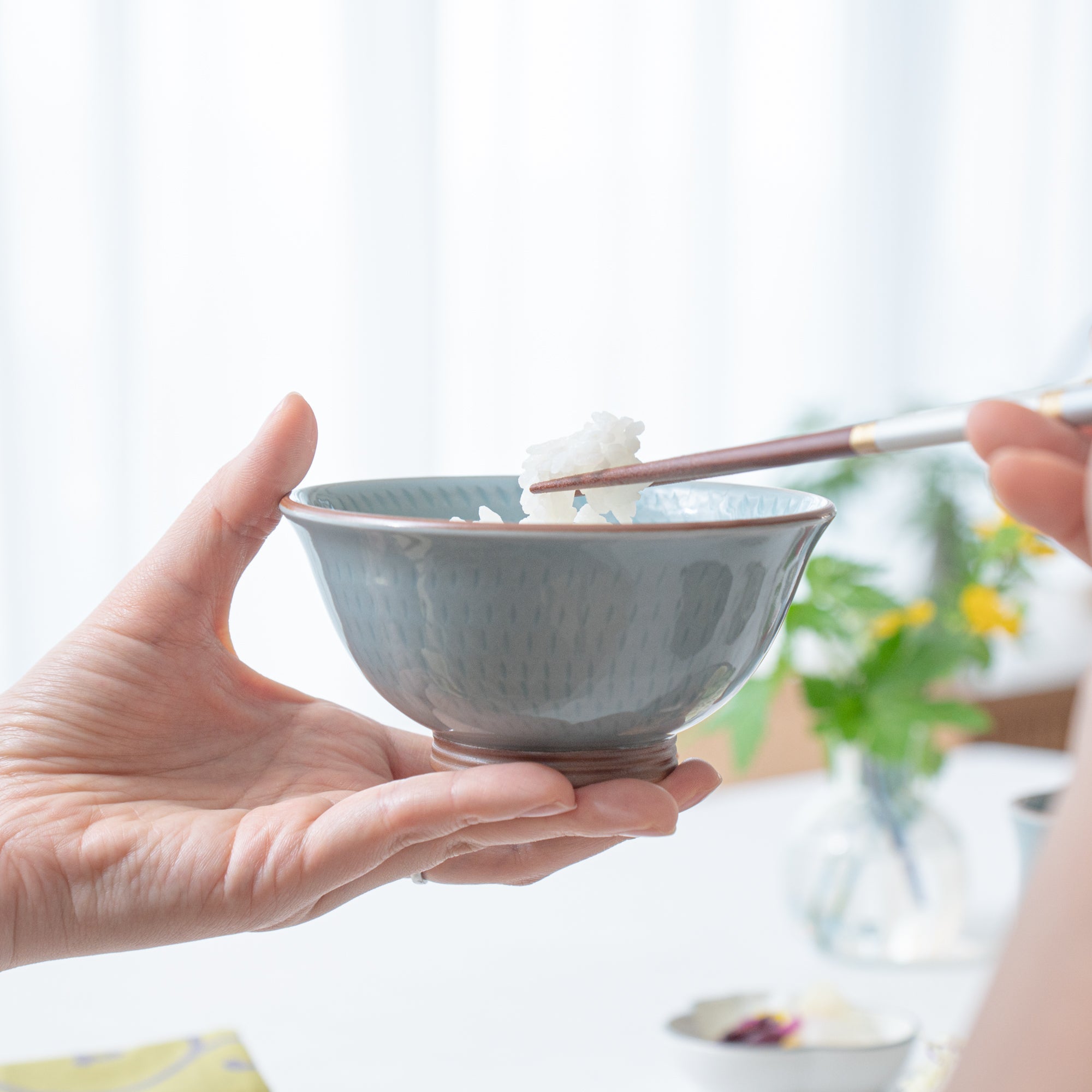
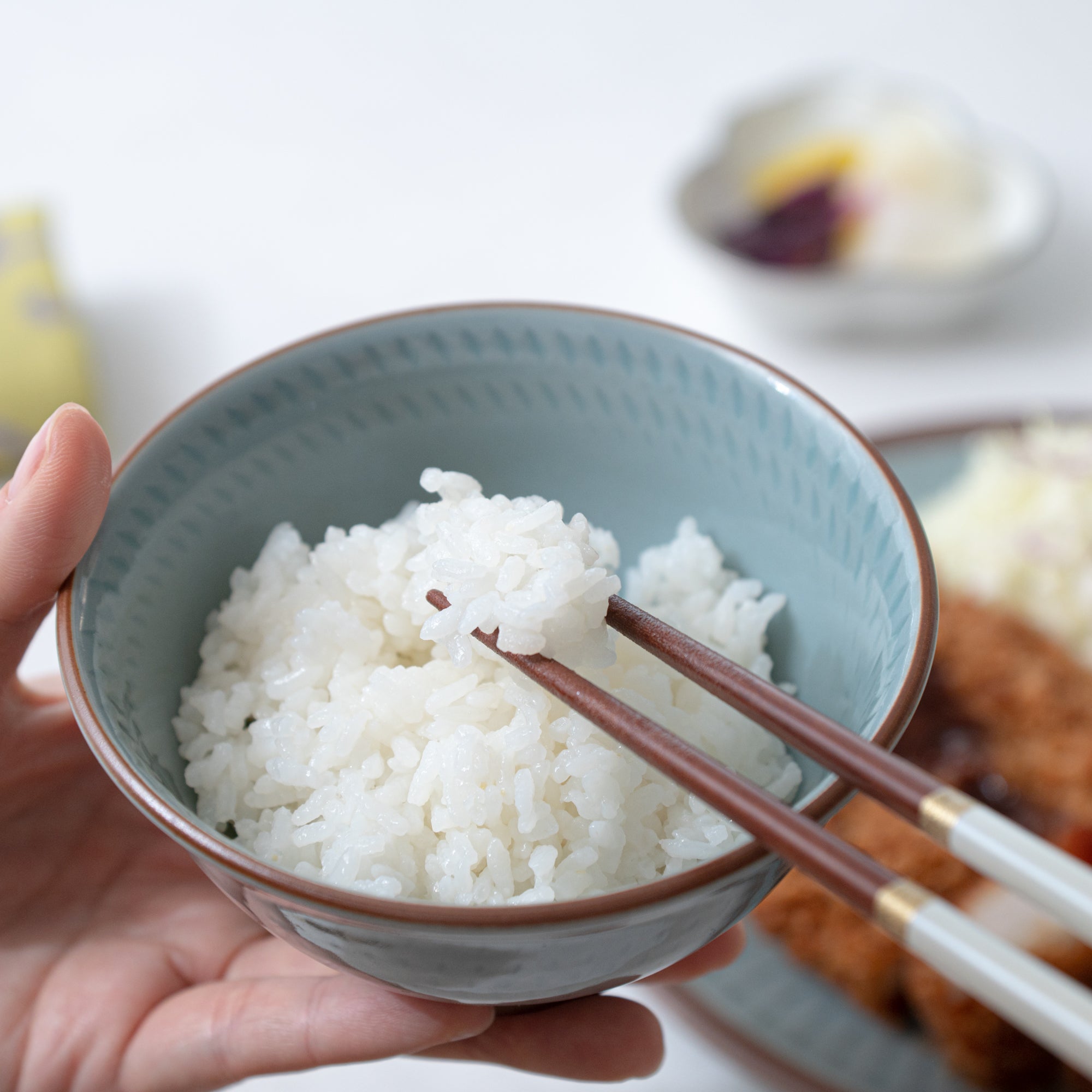
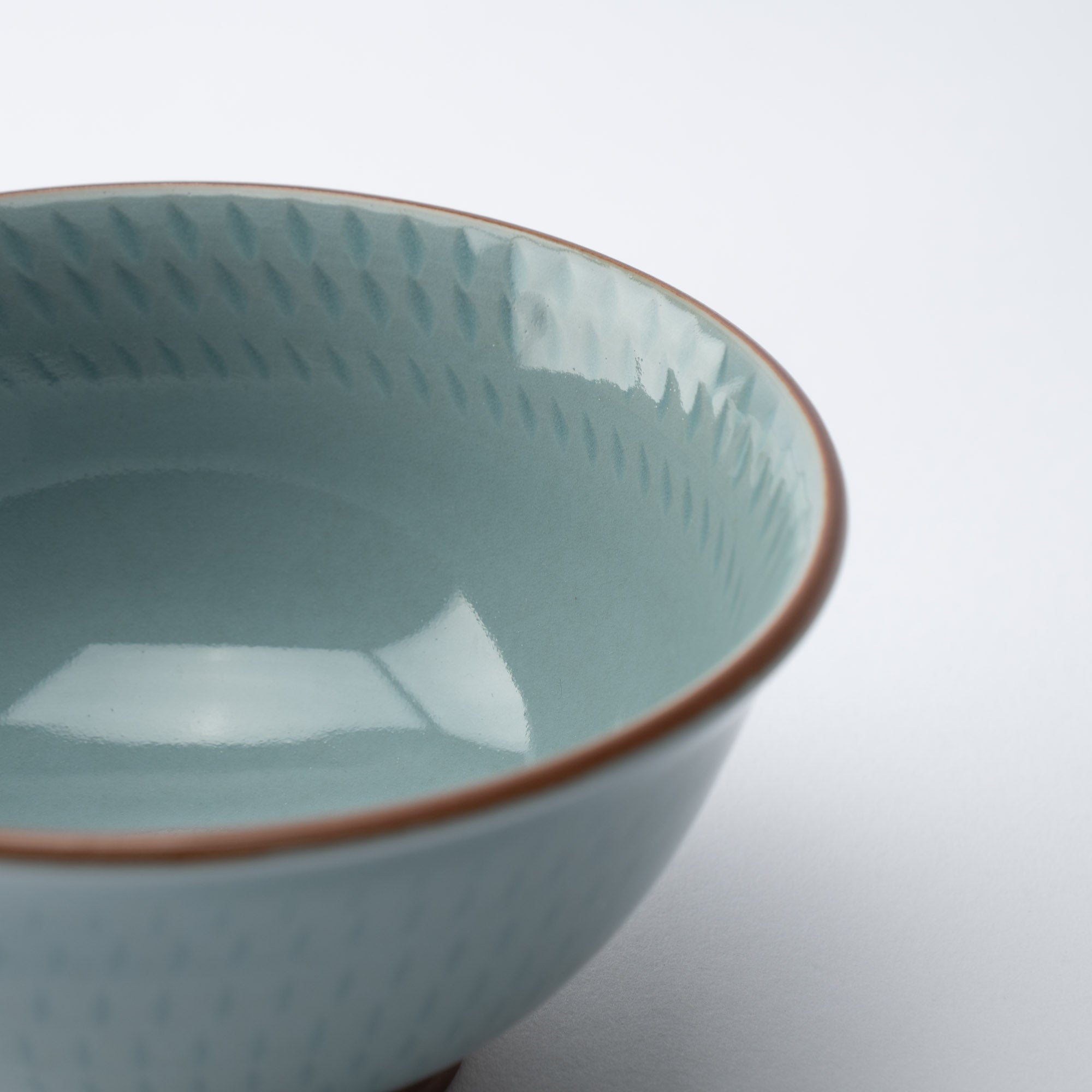
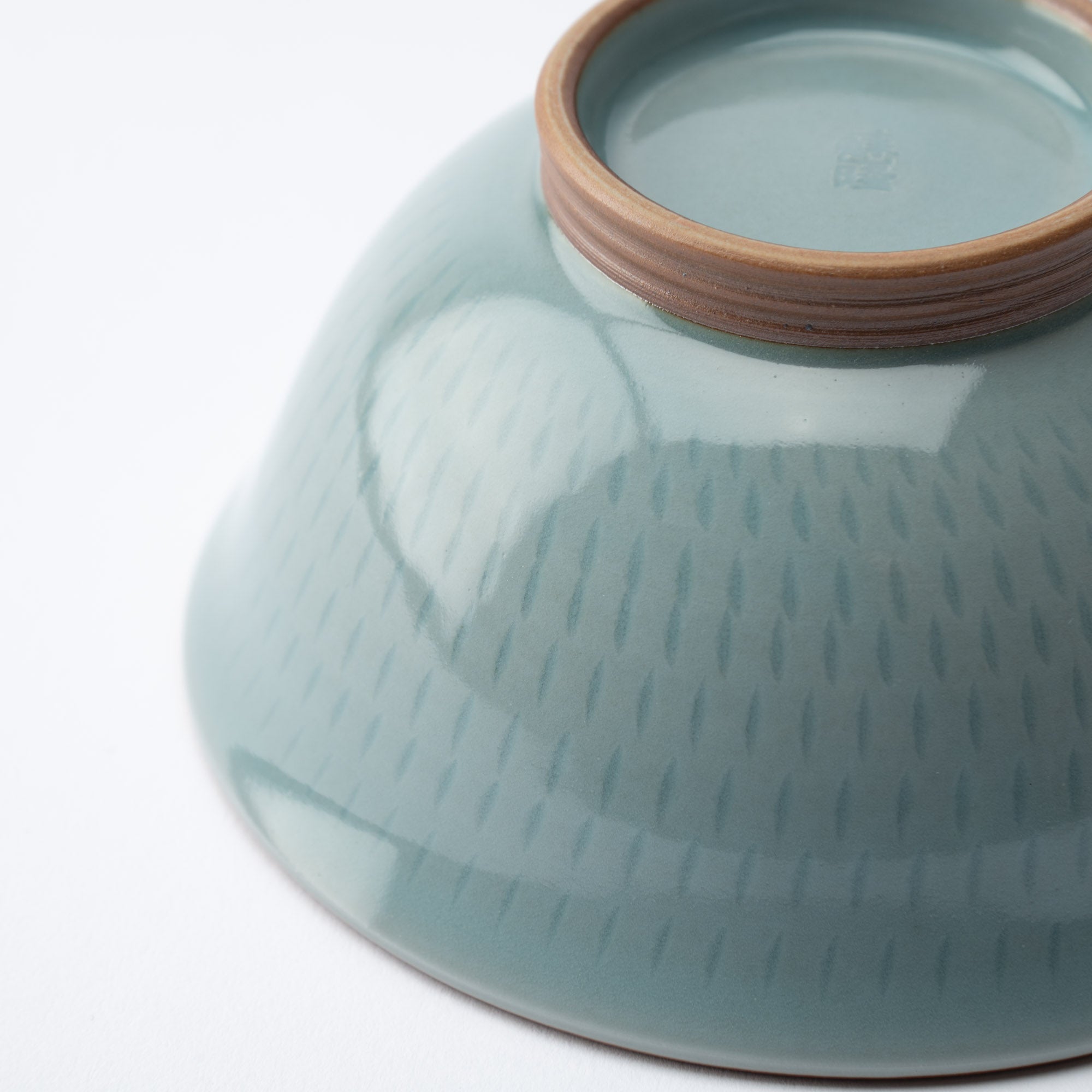
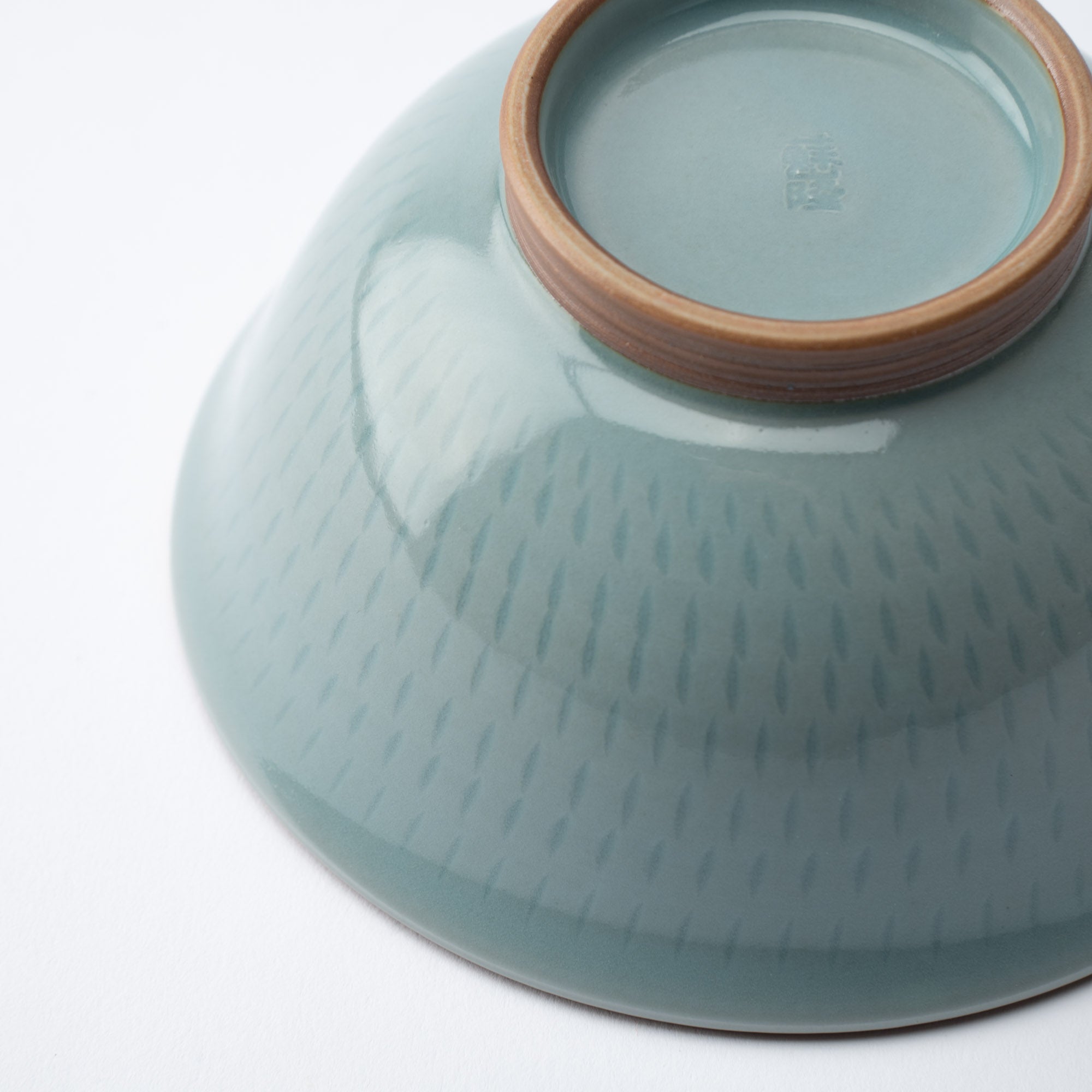
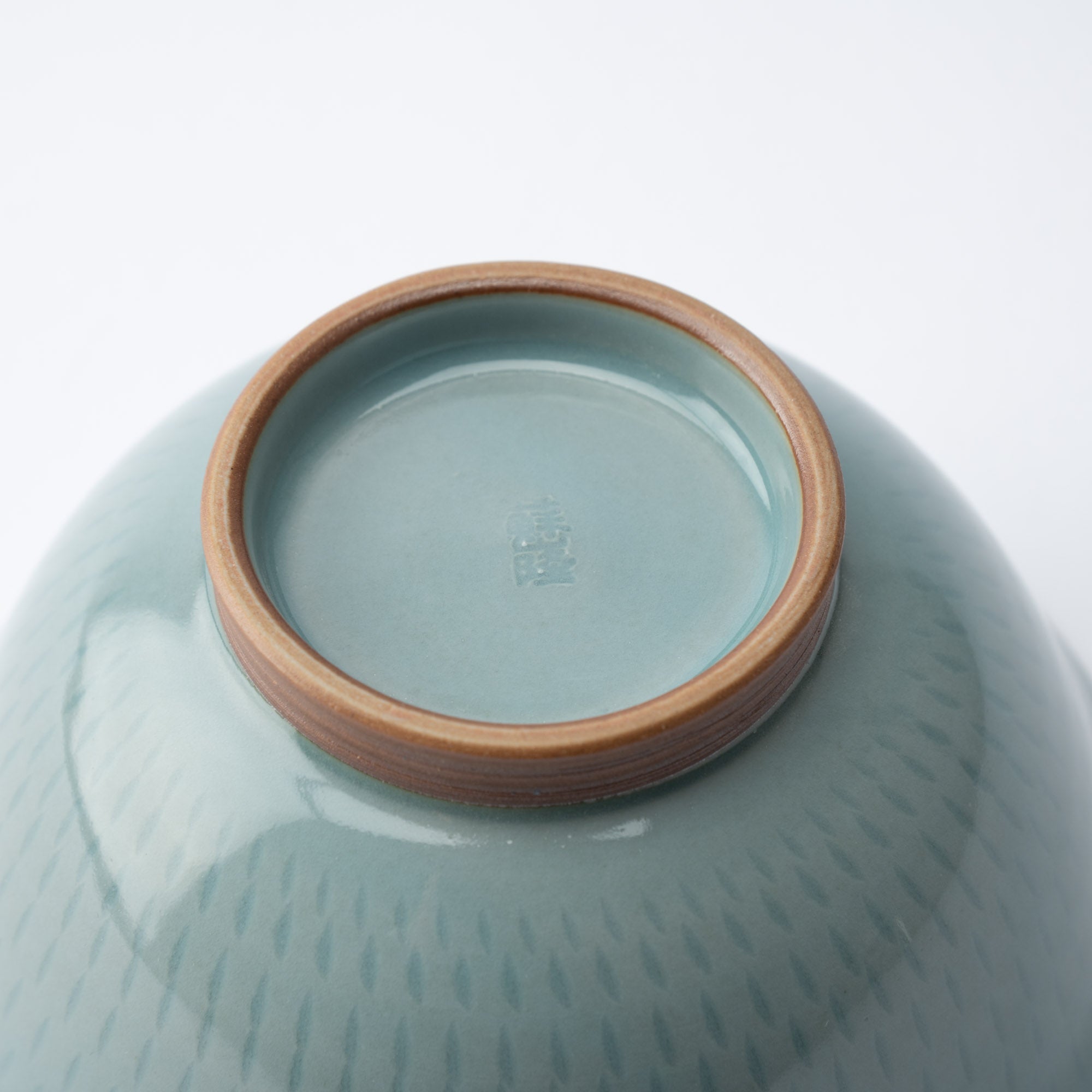
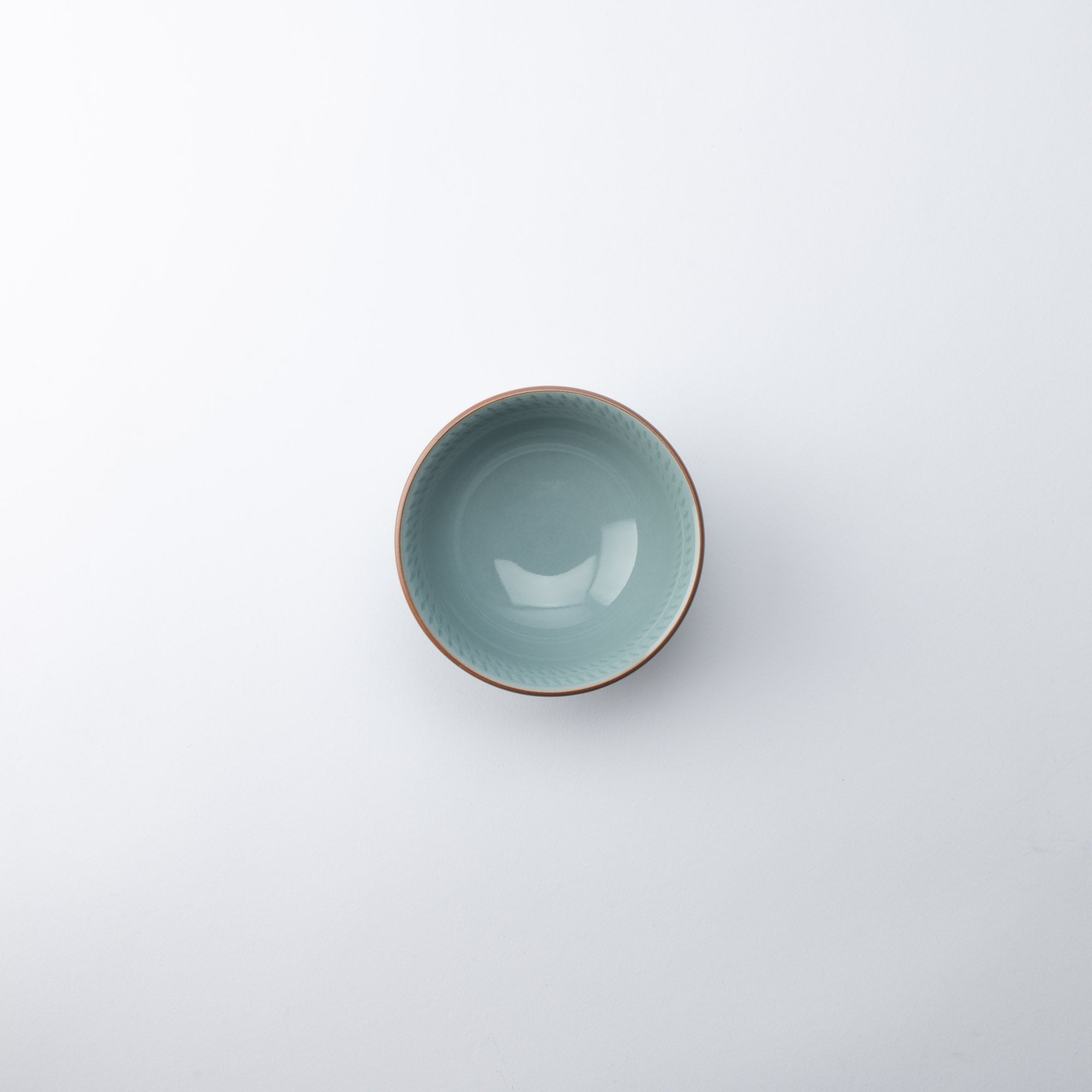
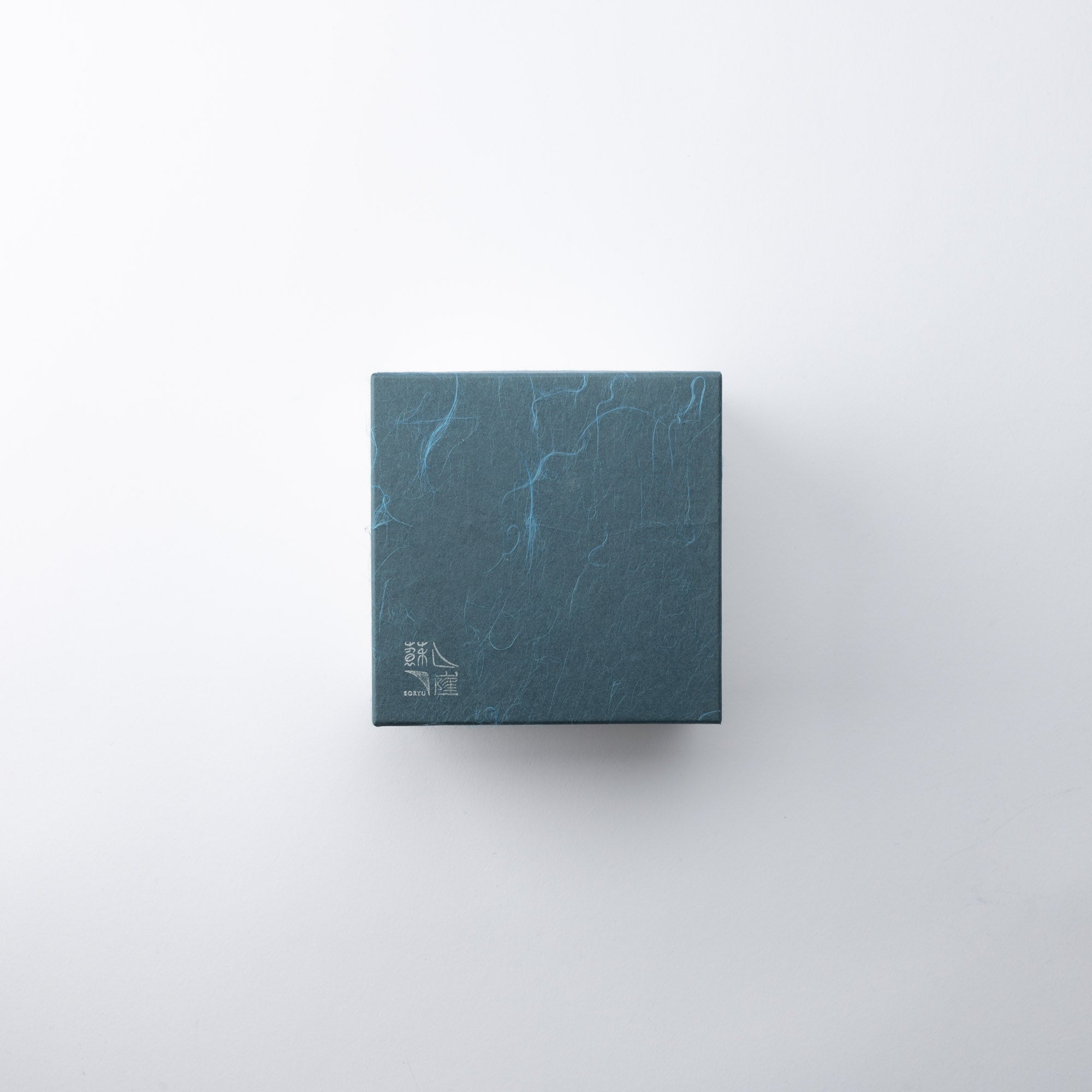
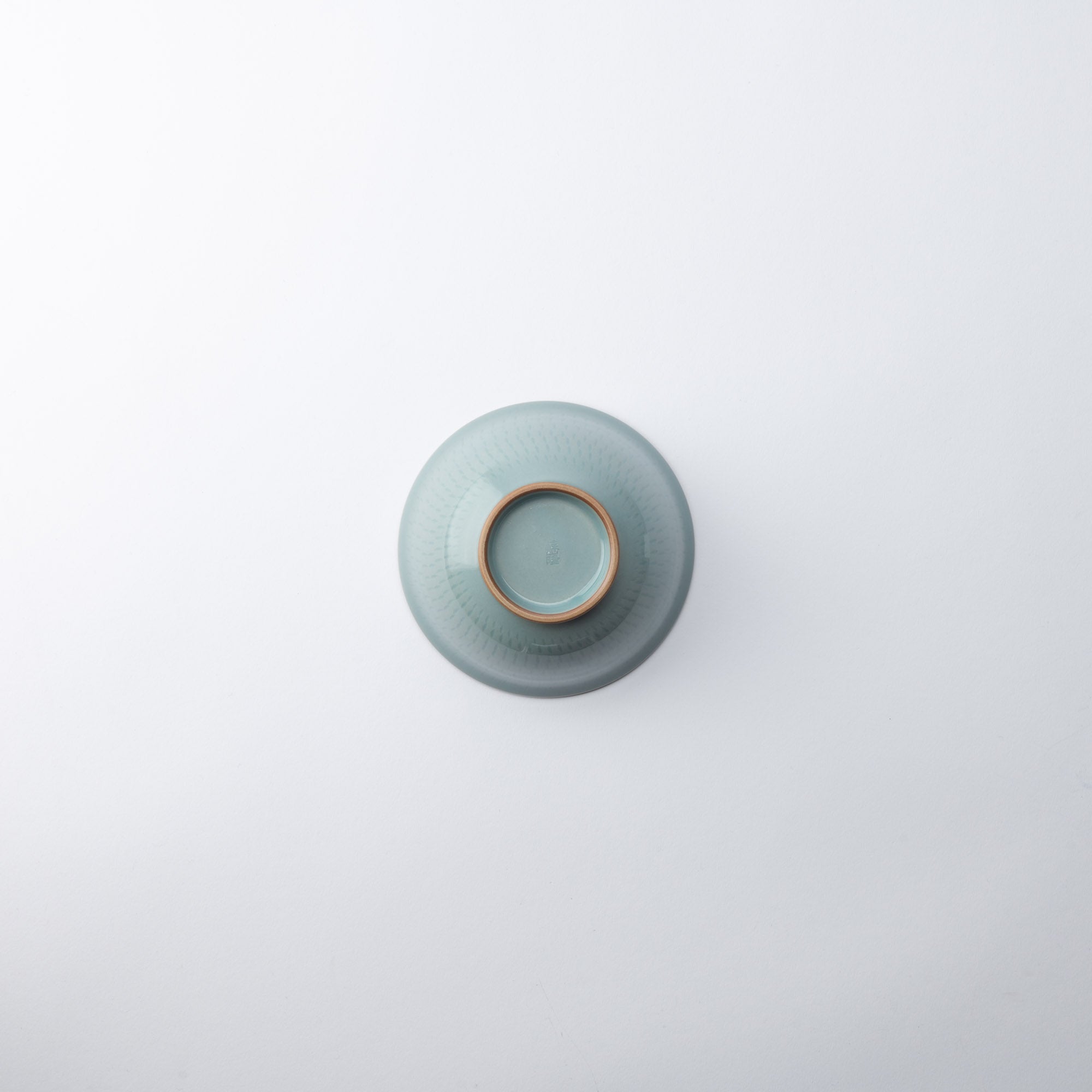
Türkis Farbige Reisschüssel
Estimated Shipping Widget will be displayed here!
Die meditative Tiefe des Seladonblaus lässt uns sogar vergessen, dass es sich hier um eine Schüssel für den täglichen Gebrauch handelt. Der Boden der Schüssel ist klar und glatt mit seinem leuchtenden Glanz, während die Oberseite fein geschnitzte Rillen der Technik von aufweist „Tobikanna“ (geschwärzte Keramik). Der Rand legt die Umrisse des roten Tons frei, eine exquisite Balance zwischen der Eleganz des smaragdgrünen Seladon und der rustikalen roten Erde.
Der türkisfarbene Glanz entsteht durch das sorgfältige Einkneten der im Ofen selbst gemischten Pigmente und Seladonsamen in den Ton. Nach dem Brennen im Ofen erstrahlt der Seladonsamen in diesem einzigartigen, herzerwärmenden Blau.
Der Seladonglanz wird Ihren warm gekochten Reis sicherlich verschönern, die glatte und elegante Form und Farbe ist eine Freude für das Auge, wenn Sie nach einem sanften und meditativen Gefühl suchen.
EINZELHEITEN
| Quantity | 1 |
| Size | D 12 cm (4.7 in) x H 6 cm (2.4 in) |
| Material | Porcelain |
| Package Type | Paper box |
| Microwave | Yes |
| Dishwasher | Yes |
Hersteller / Marke
Soryu Kiln ist ein Kyo-Keramikofen, der sich auf die Kunst der Seladon-Porzellanherstellung sowie die Techniken der Koishiwara-Keramik der Präfektur Fukuoka spezialisiert hat. Seine Werke zeichnen sich durch ein einzigartiges Design aus, bei dem die blauen Seladon-Töne durch Rillen hervorgehoben werden, die durch das Herausschneiden kontinuierlicher geometrischer Muster mit einer Technik namens Tobikanna, auch als Chattering bekannt. Ihr Stil ist eine Kombination aus der Noblesse traditioneller Seladonware und der volkstümlichen Handwerkskunst der Tobikanna-Techniken.
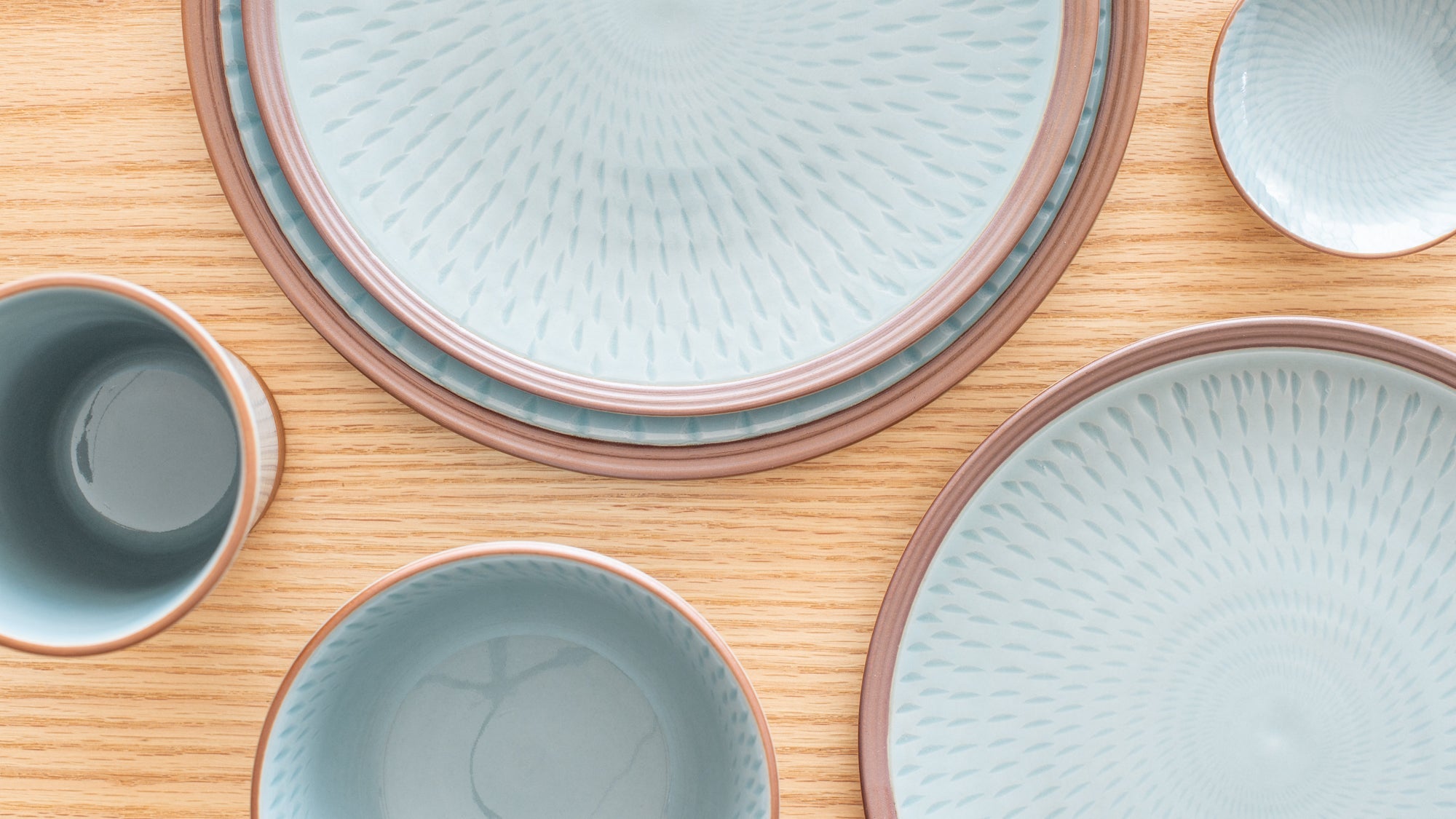
Kunsthandwerk
Kyo- und Kiyomizu-Ware, zusammen als Kyo-yaki und Kiyomizu-yaki bekannt, sind berühmte Keramikstile aus Kyoto. Bekannt für ihr lebendiges Design, ihre fein geformten Formen und die Liebe zum handwerklichen Detail, spiegeln diese Waren Kyotos unverwechselbaren Sinn für Schönheit und künstlerische Raffinesse wider.
Kyo- und Kiyomizu-Ware zeichnen sich durch eine lange gepflegte Vielfalt aus und greifen auf Techniken und Stile der Töpfertraditionen Japans zurück. So entwickelte sich eine ausdrucksstarke und typisch Kyoto-Kunstform. 1977 als traditionelles japanisches Kunsthandwerk anerkannt, werden sie bis heute wegen ihrer kulturellen Tiefe und Alltagstauglichkeit geschätzt.

Optionen auswählen











Reisschalen
Reisschüsseln sind ein unverzichtbares Geschirr für den japanischen Esstisch. Da sie so häufig für japanisches Essen verwendet werden, legen viele Menschen besonderen Wert auf sie. Es ist wichtig, eine Schüssel zu wählen, die nicht nur schön aussieht, sondern auch die richtige Größe für Ihre Hand hat und gut in der Hand liegt.
Wir empfehlen, für jedes Familienmitglied eine eigene Reisschüssel zu besorgen. Es empfiehlt sich auch, für verschiedene Anlässe mehrere Schüsseln in verschiedenen Farben und Mustern bereitzuhalten, passend zur Jahreszeit und zum Tischgedeck.
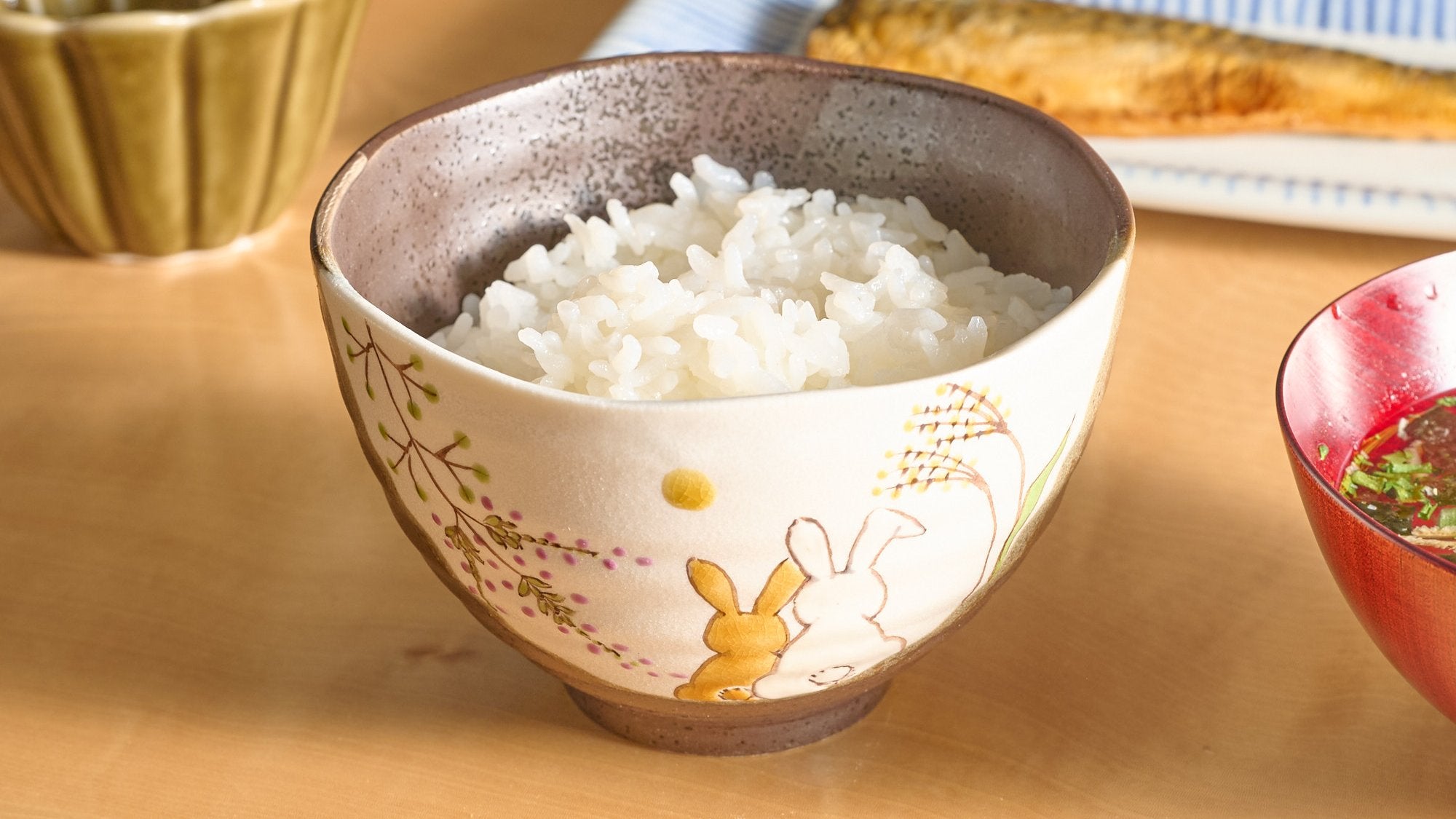
Porzellan
